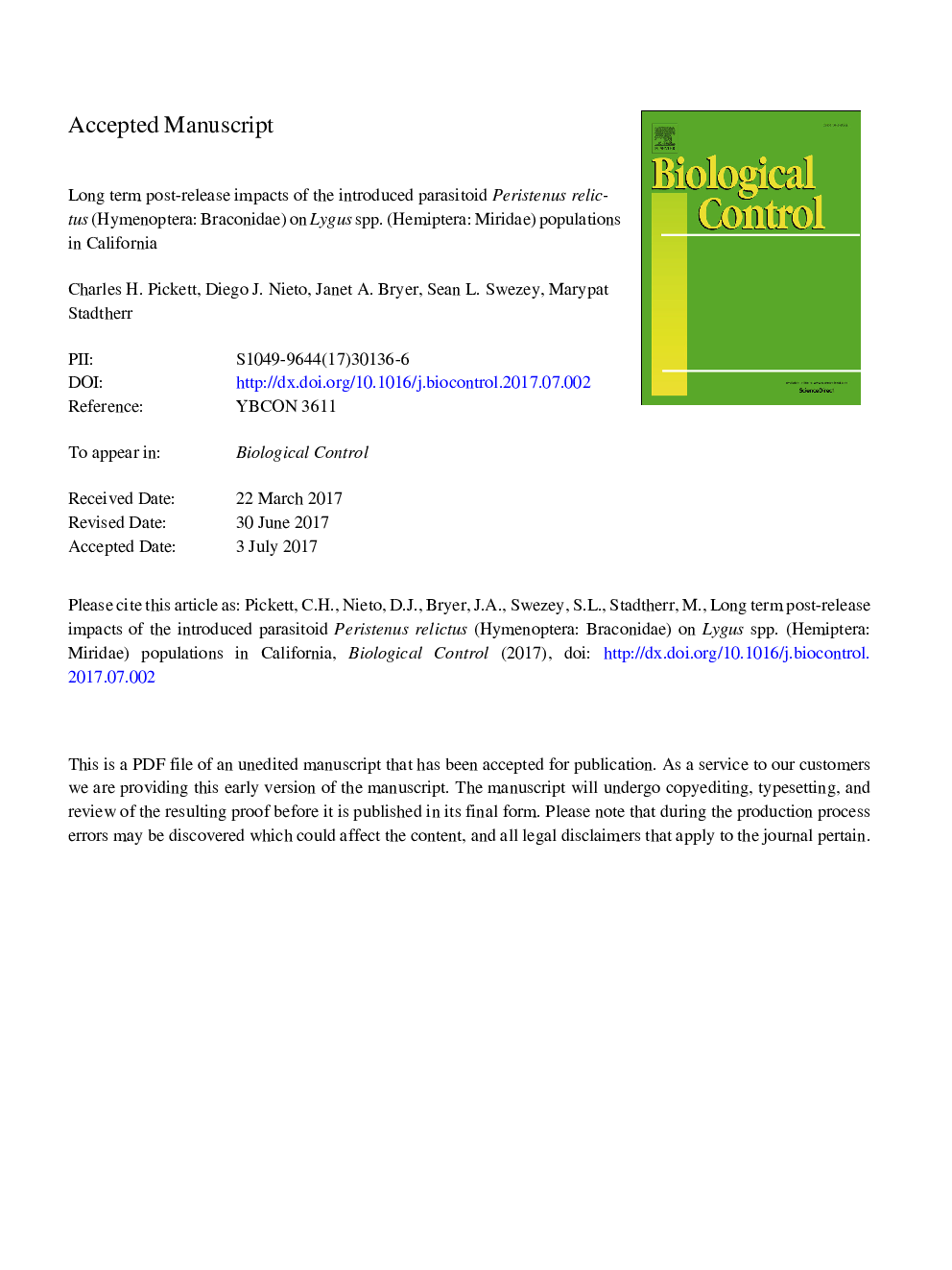| Article ID | Journal | Published Year | Pages | File Type |
|---|---|---|---|---|
| 5760722 | Biological Control | 2017 | 41 Pages |
Abstract
Annual percent parasitism peaks ranged from 45 to 71% in alfalfa or non-crop vegetation, which were either correlated with host densities or demonstrated a delayed density dependent response. Lygus spp. population reductions of over 90% were recorded at five of six sampling locations by 2011-2012. An increase in Lygus spp. densities was observed at two release sites during the last two years of monitoring in the Monterey Bay region and may be related to climate. In-season nymphal densities were correlated with winter temperatures, as warmer than average winters may have affected diapause and accelerated population growth rates. We consider this study, which corroborates the preference by P. relictus for congeneric North American host species, the biological control value of this parasitoid's establishment, and climate as a possible contributor to Lygus spp. population dynamics, to be a valuable contribution to understanding biological control of Lygus spp. by P. relictus.
Keywords
Related Topics
Life Sciences
Agricultural and Biological Sciences
Agronomy and Crop Science
Authors
Charles H. Pickett, Diego J. Nieto, Janet A. Bryer, Sean L. Swezey, Marypat Stadtherr,
